There’s a certain rhythm to life in the bush — one that can’t be rushed or predicted. And for many guests at Shumbalala Game Lodge, the most meaningful moments aren’t always the ones that make it onto Instagram. A real safari is about more than ticking animals off a list. It’s about the process — the waiting, the watching, the wondering.
Discover Five Timeless Trees of the Lowveld
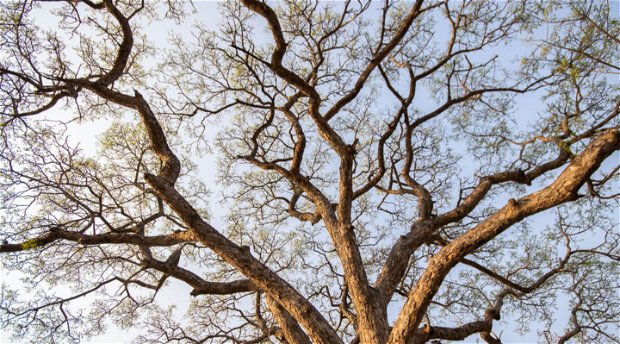
Here in the Thornybush Private Nature Reserve, every tree tells a story of adaptation, survival, and ecological importance. At Shumbalala Game Lodge, we're excited to guide you through the remarkable features of five distinct trees that stand out for their unique contributions to the Lowveld ecosystem. From the towering heights of the largest tree to the subtle allure of the most fragrant one, these trees are not just part of the landscape; they play crucial roles in supporting and sustaining the diverse wildlife and natural balance of the area.
🌟 The Jackalberry Tree: A Lowveld Giant
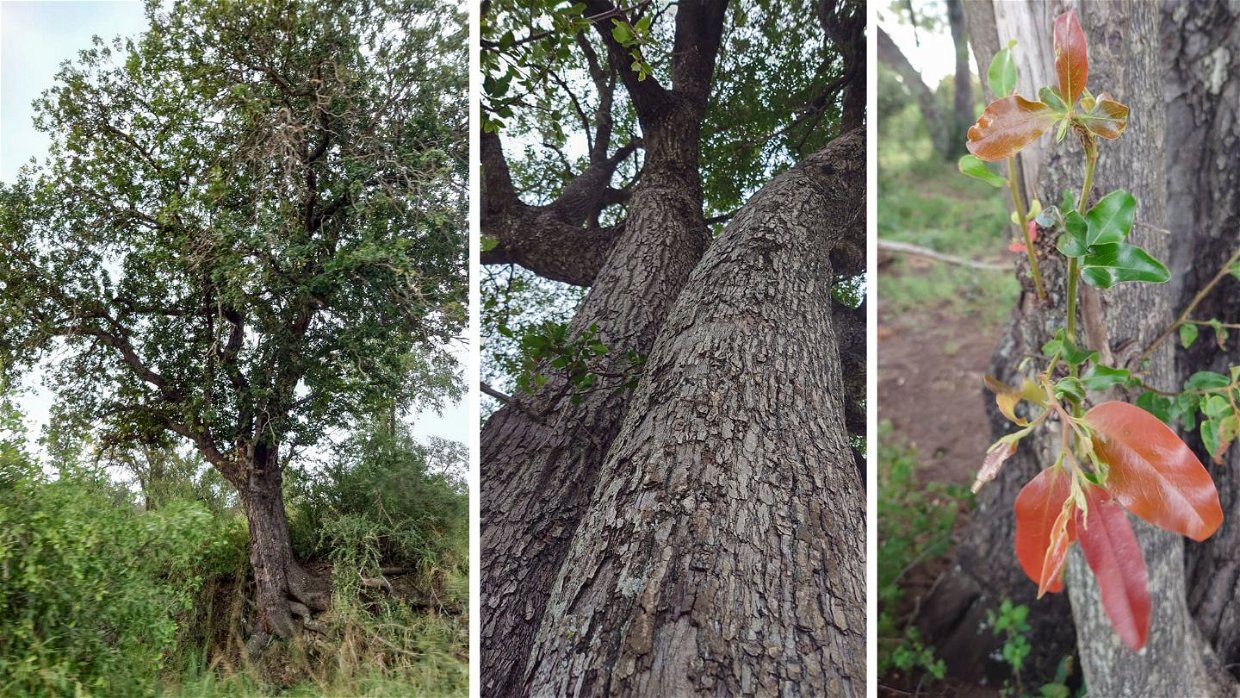
The ebony jackalberry tree thrives along rivers in the Lowveld. With its expansive trunk and broad, dense canopy, it’s not only impressive in size, but provides a crucial habitat for diverse wildlife.
Birds such as African green pigeons, brown-headed parrots, African grey hornbills and purple-crested turacos particularly enjoy the ripening fruit of this tree. The jackalberry is a vital food source for monkeys, baboons, and various antelope species. The leaves are particularly sought after by elephants and kudu, highlighting the tree’s role in supporting the local ecosystem by providing sustenance all year round.
🔥 The Tamboti Tree: The Most Dangerous Tree of the Lowveld
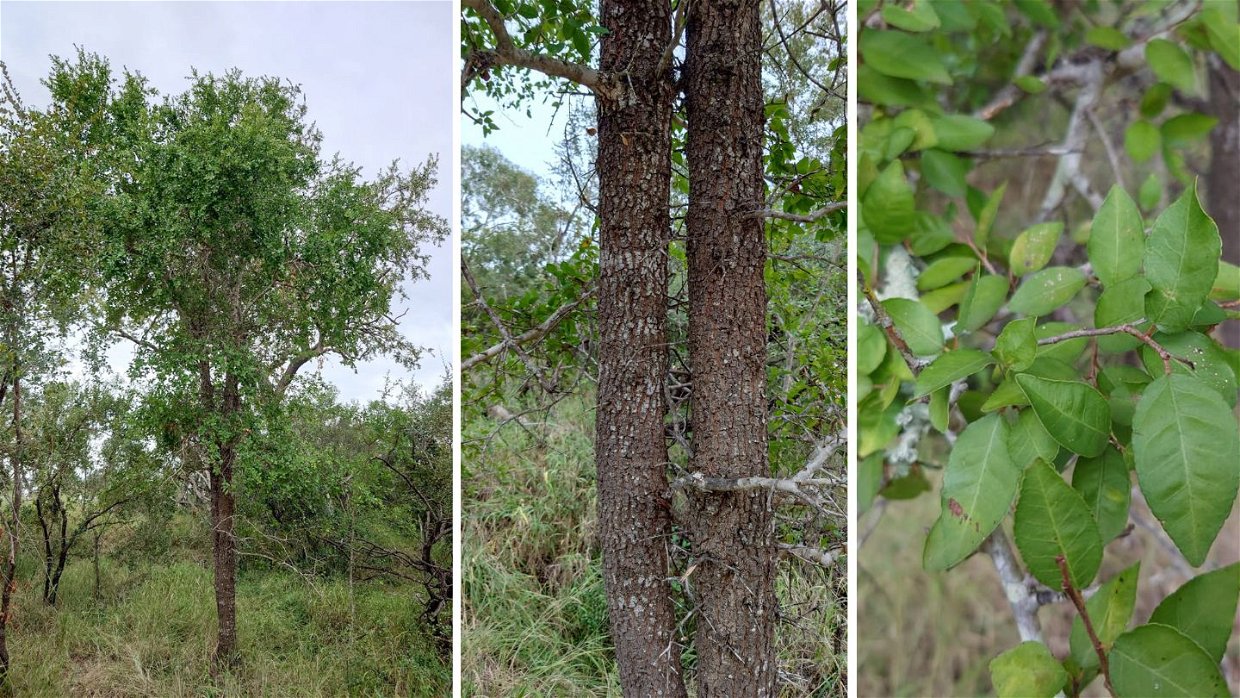
The tamboti tree, enveloped in beauty and mystery, stands as a testament to the complexity of nature. Its slender frame and red-tinged leaves are easy to recognise among the Lowveld’s greenery. As a member of the Euphorbia family, all parts of the tree produce a white, milky, irritant latex when broken or cut. This natural defence mechanism deters most herbivores and is also harmful to humans. It is crucial never to use its wood for making a fire, as inhaling the smoke can be toxic. Interestingly, some animals like the porcupine and black rhino are immune to the tamboti’s toxins, and animals such as giraffes and kudus graze on it, albeit in small amounts.
The tamboti's seeds are home to the larvae of the knot-horn moth, which jump centimetres off the ground within their seeds, leading to the curious phenomenon of "jumping beans." This unique adaptation is not only fascinating, but also serves as a strategy for seed dispersal, aiding in the tamboti's propagation and survival.
🌺 The Tree with the Best Scent: Weeping Boer-Bean
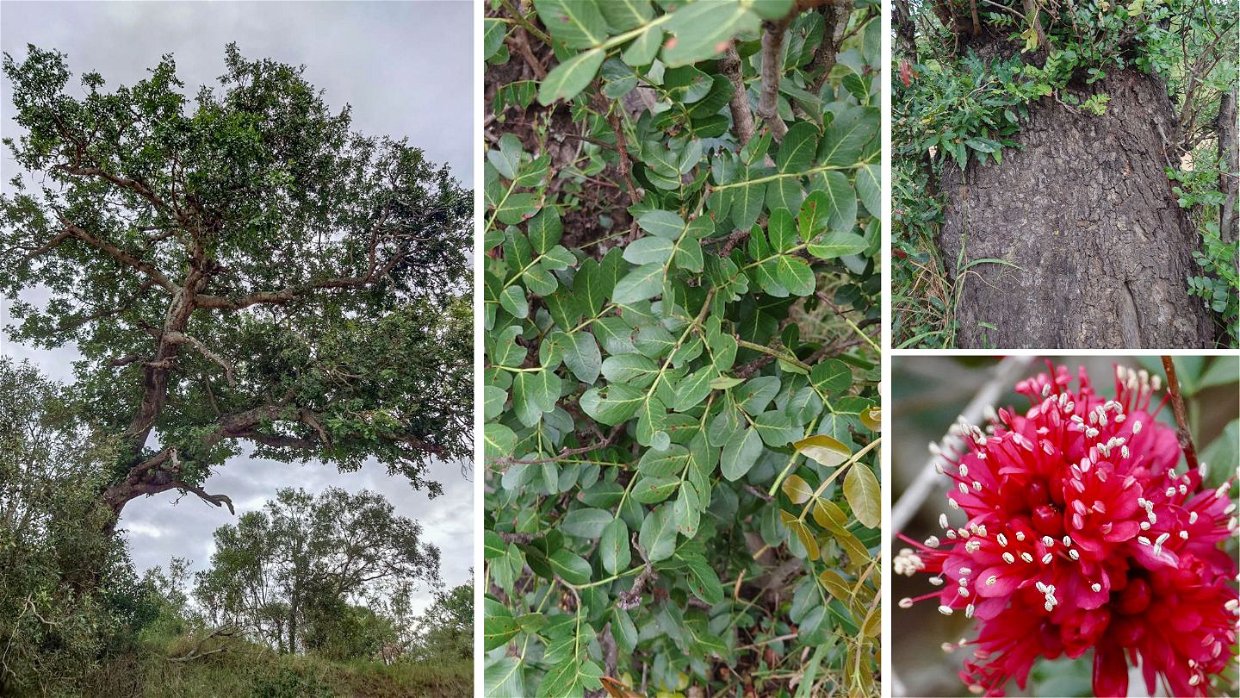
From August to October, the air in the Lowveld is perfumed with the sweet fragrance of the weeping boer-bean. Renowned for its beauty and aroma, this tree attracts a variety of pollinators to its nectar-rich blossoms, which play a vital role in the pollination network of the region.
The weeping boer-bean’s flowers not only decorate the landscape with splashes of crimson red, but also serve as an important food source for birds and insects. Baboons eat the mature leaves, while young leaves are enjoyed by kudus, giraffes, impalas, and black rhinos, who also enjoy the bark. Beyond its ecological contributions, the weeping boer-bean holds medicinal properties, with extracts from its bark offering relief from heartburn or hangovers.
📚 The Fever Tree: Most Interesting Story
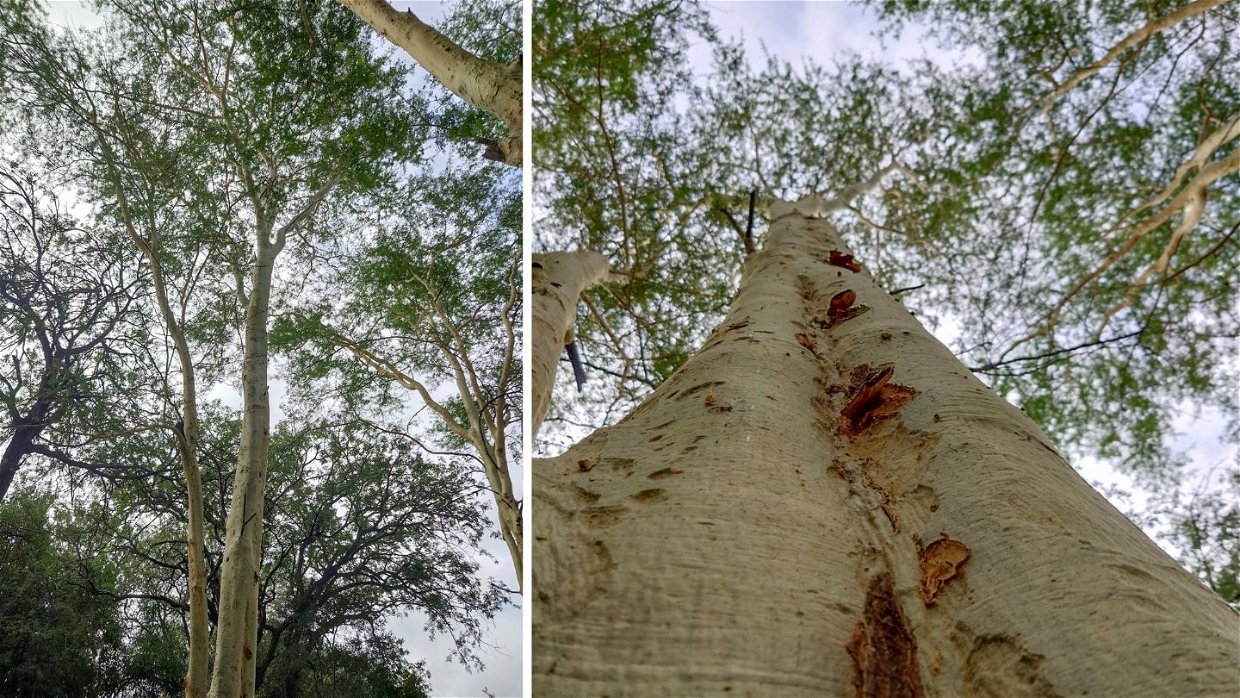
The fever tree is immediately recognisable by its smooth, lime-green, powdery bark. It was once mistakenly believed to be the cause of malaria, earning its name because early pioneers associated it with fever outbreaks. They did not realise that the actual culprits were the mosquitoes breeding in the swampy areas where fever trees thrive. This misconception was overturned with the discovery that the tree’s bark contained quinine, a game-changer in combatting malaria.
The tree’s global acclaim began in 1820 when British Army officers in India, seeking to prevent malaria, concocted the first Indian tonic water by mixing quinine with sugar and water. The addition of gin made the drink more enjoyable, leading to the creation of the original gin and tonic. This beverage quickly became a staple of the British Empire, its origins deeply rooted in the history of the fever tree.
Today, the fever tree continues to flourish in its natural setting, providing nourishment to a variety of animals. Baboons, monkeys, and bush babies feed on its nutritious gum, while giraffes and monkeys consume the pods. Elephants favour the young branches and leaves, and the tree's flowers attract monkeys, butterflies, bees, and the grey go-away bird.
🐘 Most Loved by Wildlife, Especially Elephants: Marula Tree
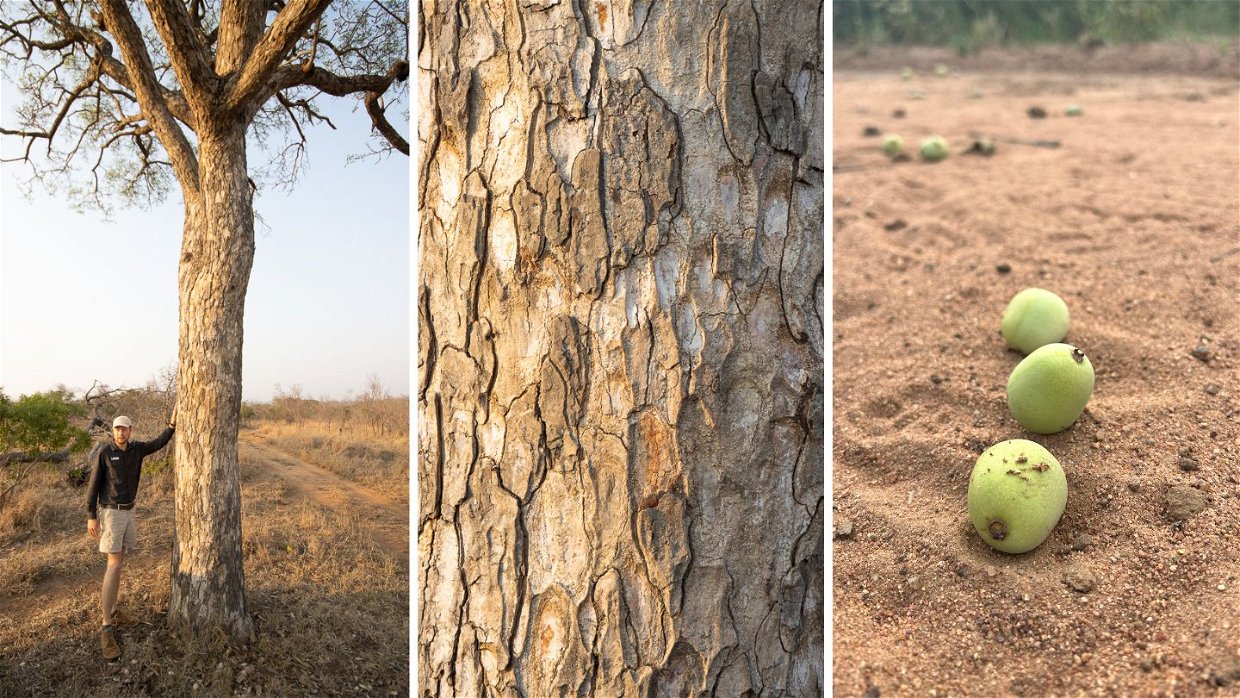
The marula tree is a beacon of life and delight in the Lowveld, its fruits eagerly sought by a broad array of wildlife, especially elephants. These majestic creatures are often spotted enjoying the marula’s bounty, sometimes even ‘shaking’ the trees to dislodge more fruits. The fruit is not only delicious but also rich in vitamin C.
Humans have also developed a strong bond with the marula tree, using its fruit to craft beer, jelly, and jam. The pulp of the marula fruit is even used commercially to flavour Amarula liqueur, a special treat you’ll be able to purchase when visiting South Africa.
The flowers attract insects and serve as a food plant for various butterfly and moth species. Butterfly caterpillars feast on the foliage, and mosquitoes find breeding grounds in the hollows between branches.
As we delve into the stories of these five remarkable trees, we gain insights into the complexity and beauty of the Lowveld. Each tree, with its unique role and story, contributes to the rich diversity in this region, underscoring the importance of conservation and appreciation for the natural world around us.
Further Reading
If you’re planning your honeymoon and find yourself torn between golden beaches and something a little different, you’re not alone. The beach is a classic choice — but we’re here to let you in on a little secret: A honeymoon in the bush is something magical. And at Shumbalala Game Lodge, in the heart of the Thornybush Private Nature Reserve, it might just be the most romantic escape you never knew you...
At Shumbalala Game Lodge, some mornings come with coffee and a view. Others come with coffee and elephants. You never quite know which — and that’s part of the magic. The birds are calling, the air is crisp, and the day begins slowly, just as it should in the bush. Then, through the thickets, the unmistakable sound of movement. A soft crackle of leaves, the low rustle of branches — and then,...

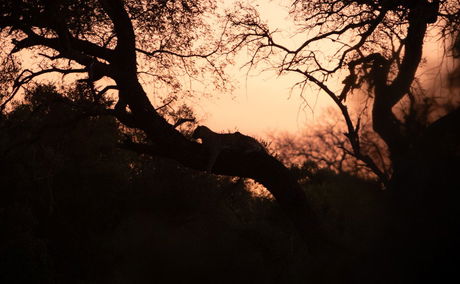

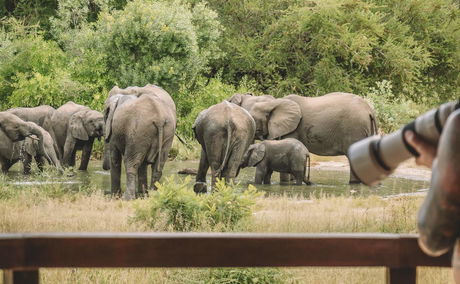


Share This Post